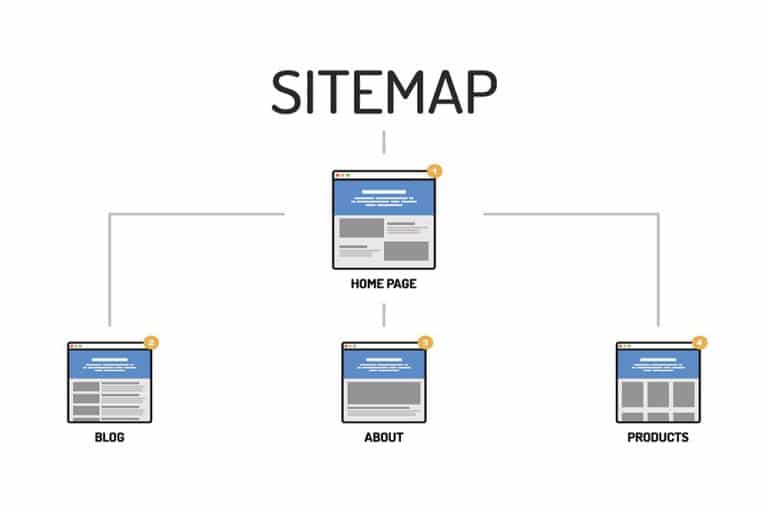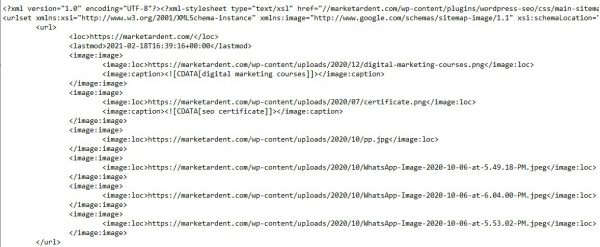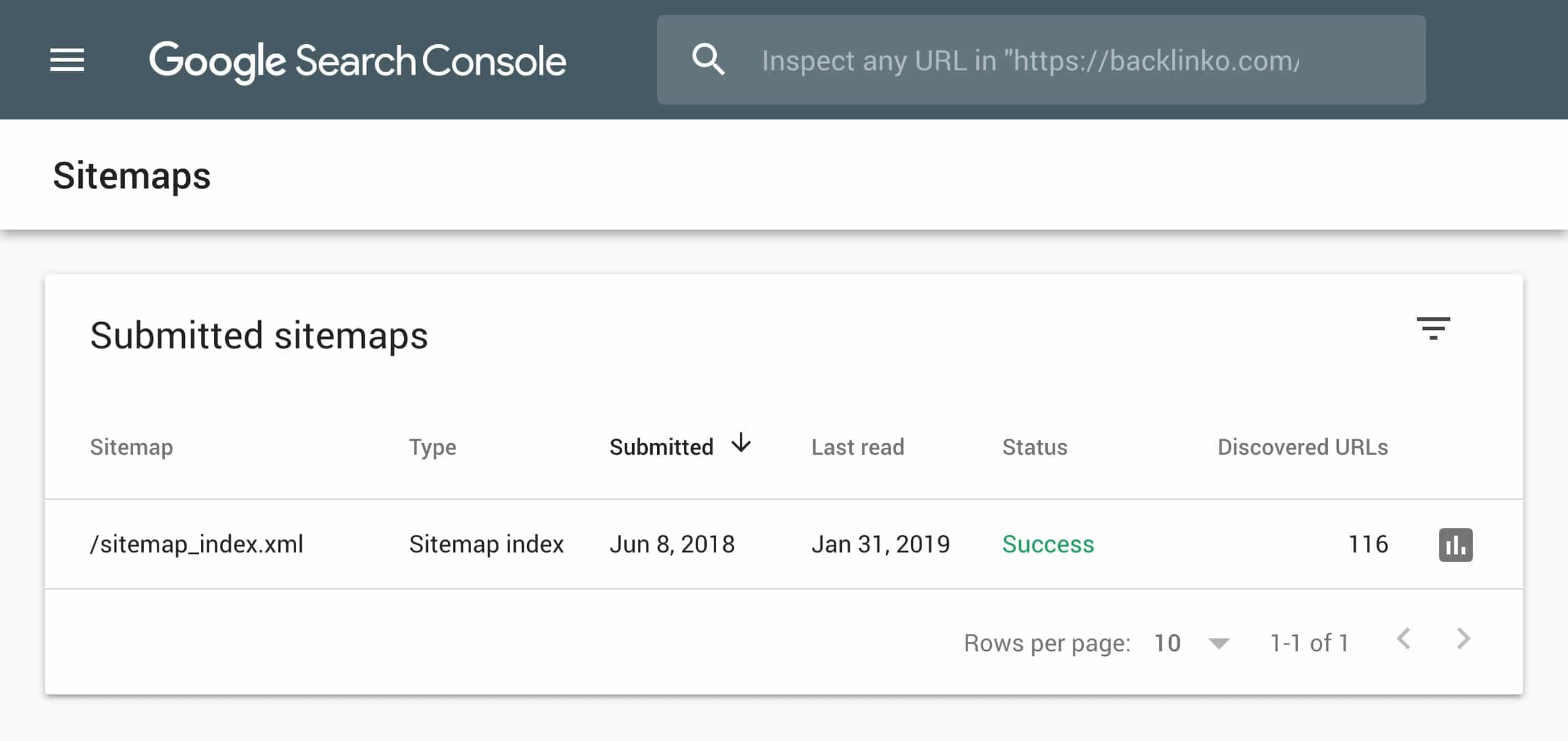
Sitemaps are an oldie but a goodie in the world of SEO.
They are, in fact, one of the most significant aspects of SEO because they assist Google and other search engines in finding the pages on your website.
Not to mention that they help you rank higher because Google can find new sites and recognize updates to old pages faster.
Simply said, you can’t live without them.
I’ve heard that they can be intimidating and difficult to grasp.
But don’t allow their technicality cause you to chuck your computer out the window — I’ve got your back!
I’ll explain what sitemaps are, how to construct them, how to submit them to Google, and all of the important best practices.
What exactly are sitemaps?
To begin, a sitemap is a file that contains information on the pages, videos, photos, and other assets on your website. It is significant for several reasons, including:
- Making it easier for Google and other search engines to find and comprehend your content.
- Leading search engines through your website so that they can crawl and index the important pages.
- Assisting search in determining when new pages and modifications to existing ones are available.
assisting search engines in locating other language versions of your page
But, before I continue, you should be aware that there are two sorts of sitemap formats: HTML and XML. Here’s the key distinction:
HTML sitemaps: These are similar to your content sitemap and may be viewed and used by users to browse your site. They are also generally known as your “website archive.” HTML sitemaps are considered antiquated by some marketers, if not completely unnecessary.
XML sitemaps: This is a manually submitted sitemap that is solely used for indexing and crawling your website. It is the more contemporary method of managing how all of your website’s information is saved.
While HTML sitemaps may assist consumers to identify pages on your site, as John Mueller pointed out, internal linking should suffice. So, from an SEO standpoint, the emphasis should be on XML sitemaps.
Sitemaps Varieties
There are subsections inside these two sorts of sitemaps discussed above. I’ll now go over these in further depth.
1. Page Sitemaps
A page sitemap or regular sitemap helps the indexation of pages and posts. For sites that are not image- or video-focused, such as photography and videography sites, a page sitemap can also include the images and videos on each page.
A page sitemap without an image would look like this:
<?xml version=”1.0″ encoding=”utf-8″?>
<urlset xmlns=”http://www.sitemaps.org/schemas/sitemap/0.9″ >
<url>
<loc>https://example.com/</loc>
<lastmod>2020-09-17</lastmod>
<changefreq>daily</changefreq>
<priority>0.9</priority>
</url>
</urlset>
Include your URLs in loc> tags. Lastmod> indicates when the page was last edited. <changefreq> shows how frequently the page is edited, and priority> indicates how significant the page is in relation to other pages on the website as a whole. For additional information on these parameters, see the Sitemaps XML format.
2. Video Sitemaps
An XML video sitemap is similar to a page sitemap, but it focuses primarily on video information, so it is only required if videos are vital to your organization. If not, save your crawl budget (the limited number of crawlable pages and resources on your site) and add the video link to your page sitemap.
However, if you do require a video sitemap, it would look like this:
3. News Sitemaps
A news sitemap is required if you post news and want your content to appear on top stories and Google News. There is one important rule to follow here: do not include stories that were published more than two days ago in the file.
Google News sitemaps aren’t recommended in standard ranking results, therefore only include news items. They also don’t accept picture links, thus Google suggests using structured data to indicate your article thumbnail.
4. Image Sitemaps
Image sitemaps, like video sitemaps, are only required if images are crucial to your business, such as a photography or stock photo site. If they aren’t, you can include them in your page sitemap and tag them with the picture object schema, and they’ll be crawled alongside the page content/URL.
5. Index of Sitemaps
You should be aware of the following sitemap limitations:
- Having too many URLs will simply result in some of your pages not being indexed.
- Except for the news sitemap, all sitemaps should contain a maximum of 50,000 URLs.
- A maximum of 1000 URLs should be included in news sitemaps.
- A sitemap should have a maximum uncompressed file size of 50MB.
Because of these constraints, you may require more than one sitemap. When you use multiple sitemap files, you’ll need an index file that lists all of them. It’s the index file you upload to Google Search Console and Bing Webmaster Tools.
Example of an XML Sitemap
So far, you’ve seen the structure of each sitemap. Most websites will simply require the page sitemap, which contains the images on each page. This is how it appears:
Priorities for the Sitemap
Many individuals add priority to their sitemaps to differentiate how important distinct sites are, but Google’s Gary Illyes stated that Google ignores these priorities.
In general, as long as you are truthful about when your material was changed, include it in your sitemap so that Google and other search engines know to re-crawl the modified page and index the new content.
How to Produce a Sitemap
In this section, I’ll show you how to make a sitemap without the help of a generator or a plugin. Skip to the following stage if your website is on WordPress or if you’d prefer to utilize a generator (which makes this simple).
Here are the exact procedures to manually construct a sitemap:
1. Determine which pages on your site should be indexed by Google and which are the canonical versions.
When there are duplicate pages, you must use canonical versions. Assume you serve an international population and have pages with the same language and content for each area, such as example.com/us/page and example.com/ca/page for visitors from the United States and Canada, respectively.
In such a situation, it’s critical that you point to the original, which could be example.com/page or one of the two. If you want to understand more about how canonicalization works, check out this post.
Furthermore, search bots cannot crawl URLs that are prohibited by robots.txt files, require a login to access, or are password-protected. Only when you add coverage errors will you see them in GSC.
2. Determine whether you require more than one sitemap.
For pages, posts, and categories, some websites employ different files. Keep in mind that if you have more than 50,000 URLs, you will require numerous sitemaps.
3. Format all of your URLs in XML tags to resemble the sitemap you wish to produce.
This page goes over how to use XML tags in further depth.
4. If you have numerous sitemap files, make a sitemap index file with links to the individual sitemaps.
This is already covered in the “Sitemap Index” section.
Sitemap Creators
Because most marketers lack a background in web development, we can’t code to save our lives. If the notion of manually creating a sitemap gives you a headache, utilize a sitemap generator to save yourself 12 days of tedious coding.
You can use the following sitemap generators:
- Merkle’s TechnicalSEO provides one where you may upload a CSV file with your URLs. It’s especially useful if your pages are available in multiple languages (hreflang tags). If your website is hand-coded and does not use a CMS or builder that generates a sitemap, you must use a generator like as
- Screaming Frog SEO also prefers to employ SEO Spiders with simple custom-built sites. Make sure you’re in spider mode in Screaming Frog. You can do so by going to “Mode” and selecting “spider.” Then enter the URL of your home page and wait for it to crawl. When it’s finished, click “Sitemaps.”
To save the XML file to your computer, check all of the choices that apply to your site and click “export.” Then, in the root directory of your server, upload the file.
The sitemap file is not automatically updated by either program. Some tools do, but they are expensive, therefore you must pay for the service.
If your website is built on WordPress or an eCommerce platform like Shopify, you won’t have to deal with any of the above.
Yoast and Rank Math are popular SEO plugins for WordPress sites that generate sitemaps and update them when you alter your posts and pages, and Shopify even generates sitemaps automatically.
Know more about : Social Media SEO, Disavow Links, DealDash, Binance Coin
How to Submit Your Google Sitemap
Google Search Console is the best approach to submitting your sitemap to Google (GSC). There are other methods and additional processes, but I’ll start with GSC because it’s the most prevalent.
Take the following steps:
1. Navigate to Google Search Console and select “sitemap.”
2. Enter your sitemap URL and press the Submit button. You only need to type the URL for the index file if you have several sitemaps with a sitemap index file.
If you haven’t already submitted it to GSC, you may let Google know you have one by including the following line in your robots.txt:
http://www.example.com/sitemap.xml
Of course, replace the URL provided with the one you actually have. Also, if you have an index file, only include it here.
If you aren’t utilizing GSC, utilize the ping service to notify Google that it should crawl your file. To do so, enter the following URL into your browser:
http://www.google.com/ping?sitemap=
https://example.com/sitemap.xml
Substitute https://example.com/sitemap.xml for your sitemap URL.
And it’s finished!
Best Practices for Sitemaps
Now that you know why sitemaps are important, how they work, and how to submit them, let’s make sure the final one you build is in top form by following these best practices.
1. Make use of programs that generate automatic sitemaps.
Manually developing and updating an XML sitemap will take a significant amount of time (and is unnecessarily complex). It’s preferable to use an automatic sitemap generator to save time and focus on other things, such as your next Netflix binge.
The ones mentioned above for WordPress include that feature for free. You will have to pay for custom-built sites, but it is absolutely worth it in my opinion.
2. Perform routine sitemap maintenance checks and changes.
Check your sitemaps on a frequent basis because SEO is a never-ending process. The Search Console performs a good job of informing you if your submitted URLs have crawling or indexing issues.
When there are issues, check the ‘Coverage’ section in GSC and update your site or sitemap. The beautiful thing about this is that it tells you exactly what the problem is and how to repair it.
Screaming Frog can also be used to maintain sitemaps. Check the response code tab for 404 or 5xx issues after crawling your website or sitemap URL.
If you’re using an automatic sitemap generator tool or plugin, make sure it’s up to date. Furthermore, visit your sitemap URL on a regular basis to see if any pages are missing or if the latest updated time is inaccurate.
3. In your sitemap, prioritize high-quality pages.
Although Google no longer considers the priority tag (or so they claim), you can still utilize it because there are more options than Google (yes, as an SEO I will admit it). Because Bing may pay heed to the tag, it’s still a good idea to prioritize high-quality sites in your sitemap.
Sitemap priority indicates which pages to crawl and index first, with values ranging from 0.00 to 1.00. However, don’t use the same number for all pages or Google won’t be able to distinguish which is the most significant.
You can use something like this for values:
-
Homepage – 1.00
-
Main landing pages – 0.90
-
Other landing pages – 0.85
-
Main links on the navigation bar – 0.80
-
Other pages on site – 0.75
-
Top articles/blog posts like hub pages – 0.80
-
Blog category pages – 0.75
-
Other posts – 0.64
4. In your sitemap, only include canonical URLs.
Only URLs that you want search engines to index should be included in your sitemap. That is, if a URL leads to another as its canonical version, you should not include it because it tells Google and other search engines that you do not want that URL crawled.
Ignoring it and putting that URL in your sitemap presents Google with contradictory information. The unexpected URL may be indexed, or you may encounter coverage issues in GSC. So, only include canonical versions to strengthen your place in search engine results.
5. Separate your huge sitemaps.
I have said that if your sitemap is larger than 50MB or contains more than 50,000 URLs, you should split it into multiple files. Never send huge XML files to Google; otherwise, some of your URLs will be missed – and you know how important every URL is!
One last tip is to name each file something simple (for you) like page sitemap1.xml and page sitemap2.xml.
And with that, I wish you a successful site mapping!
You May also like sitescorechecker, Pro Site Ranker

